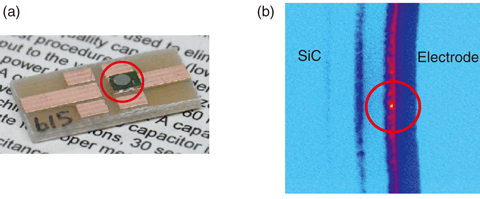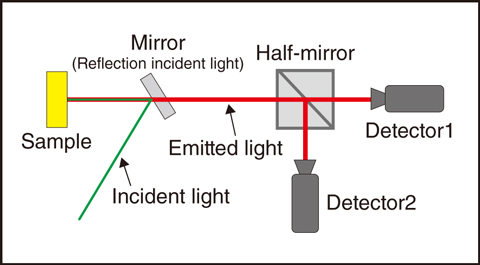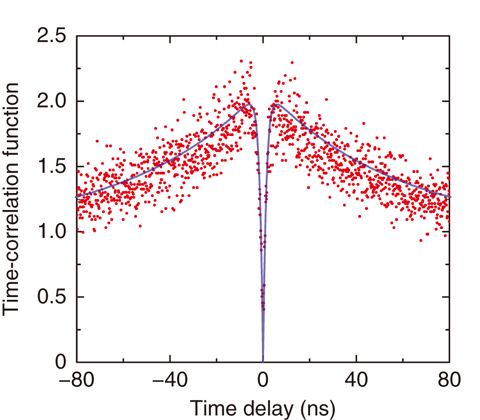
Fig.5-40 (a) Photo of a diode (b) Confocal-laser-scanning-fluorescence-microscope-observation image of the diode

Fig.5-41 Schematic of photocount-time-correlation-function measurement

Fig.5-42 Result of photocount-time-correlation-function measurement for the luminescent spot
Quantum computing with extremely high capability compared with conventional computers and perfectly secure quantum-cryptographic communication have attracted attention as next-generation technologies. For such quantum technologies, the realization of a “quantum bit,” which has an intermediate state between 0 and 1 in addition to the binary values, is a key issue. Some crystal defects in semiconductor materials act as single-photon sources (SPSs), emitting one photon under the absorption of one photon. Efforts have been made to apply SPSs to quantum bits.
We focus on silicon carbide (SiC) and explore SPSs, which can be operated at room temperature in SiC. SiC is a wide-bandgap semiconductor, and the luminescence from SPSs is not disturbed by the characteristics of SiC. In addition, since SiC has been well developed for use in power electronics, large wafers with high quality are available and the development of the device-fabrication process is progressing. Therefore, SiC also has advantages from the viewpoint of the development of quantum computers and devices for quantum communication/information. We have to discover SPSs with excellent features such as high thermal stability even after a high-temperature annealing process and high brightness at room temperature. Pn diodes were fabricated on high-quality SiC epitaxial substrates using aluminum (Al)-ion implantation at 800 °C and annealing at 1800 °C (Fig.5-40(a)). A very bright luminescent spot with 300 thousand photons per second was found near the edge of electrode for the pn diode by a confocal laser-scanning fluorescence microscope (Fig.5-40(b)). To confirm whether it was an SPS, we measured its photocount-time correlation function. Two detectors are set with a half-silvered mirror (Fig.5-41). Since an SPS emits one photon under the incidence of one photon, the two detectors never collect photons simultaneously. Thus, if the two detectors do not collect photons from a luminescent spot at the same time, the spot is confirmed to be an SPS. For the spot shown in Fig.5-40(b), the value of the time-correlation function was zero at zero seconds. Thus, two photons were not detected simultaneously (Fig.5-42). Therefore, we can conclude that the luminescent spot found in this study is an SPS that cannot be annihilated even by annealing at 1800 °C.
We must determine the spin properties of the SPS in order to consider the possibility of its use as a quantum bit.
This study was partly supported by the Japan Society for the Promotion of Science (JSPS) KAKENHI Grant-in-Aid for Scientific Research (B) (No.26286047).